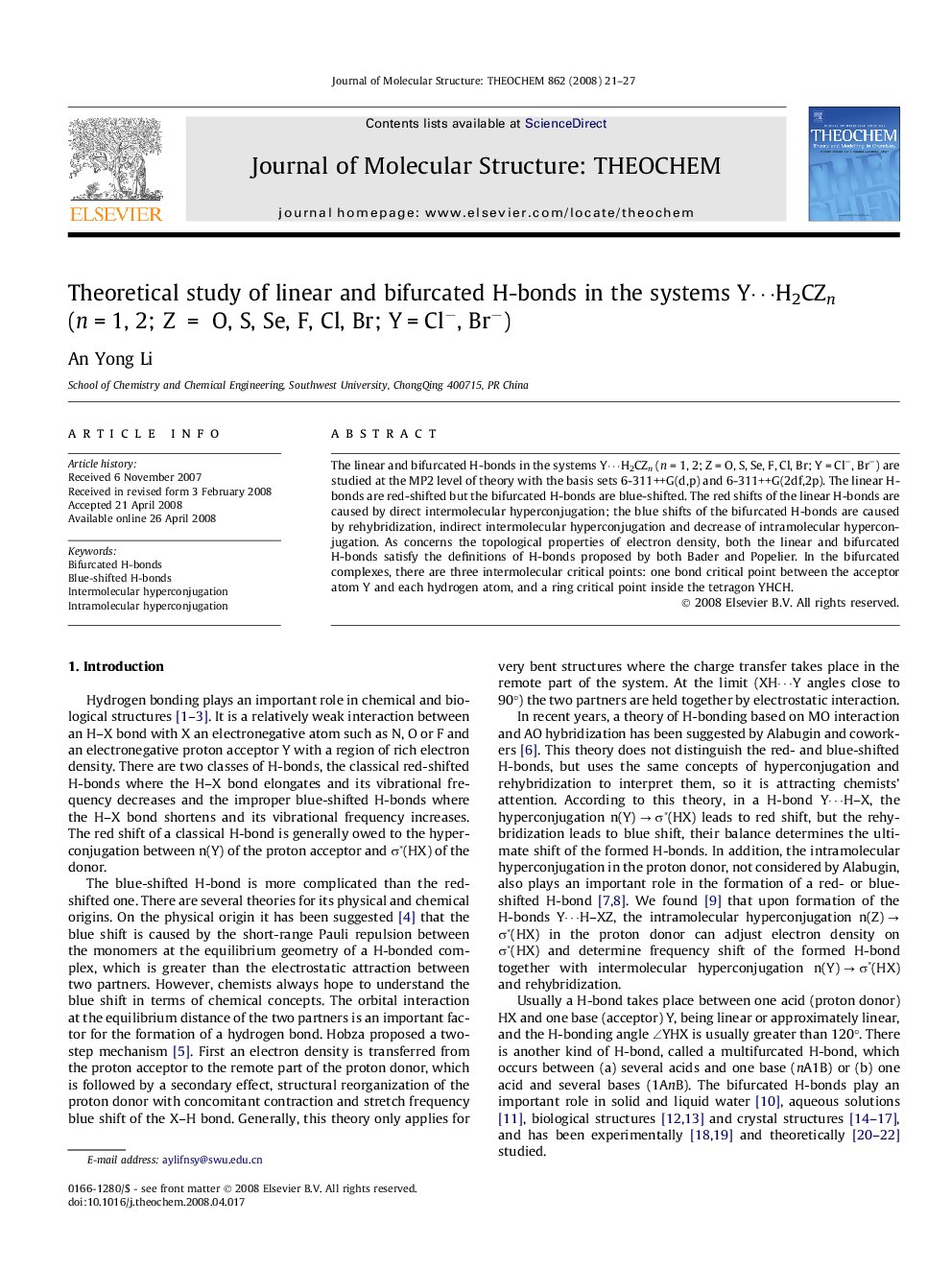| Article ID | Journal | Published Year | Pages | File Type |
|---|---|---|---|---|
| 5417849 | Journal of Molecular Structure: THEOCHEM | 2008 | 7 Pages |
Abstract
The linear and bifurcated H-bonds in the systems Yâ¯H2CZn (n = 1, 2; Z = O, S, Se, F, Cl, Br; Y = Clâ, Brâ) are studied at the MP2 level of theory with the basis sets 6-311++G(d,p) and 6-311++G(2df,2p). The linear H-bonds are red-shifted but the bifurcated H-bonds are blue-shifted. The red shifts of the linear H-bonds are caused by direct intermolecular hyperconjugation; the blue shifts of the bifurcated H-bonds are caused by rehybridization, indirect intermolecular hyperconjugation and decrease of intramolecular hyperconjugation. As concerns the topological properties of electron density, both the linear and bifurcated H-bonds satisfy the definitions of H-bonds proposed by both Bader and Popelier. In the bifurcated complexes, there are three intermolecular critical points: one bond critical point between the acceptor atom Y and each hydrogen atom, and a ring critical point inside the tetragon YHCH.
Related Topics
Physical Sciences and Engineering
Chemistry
Physical and Theoretical Chemistry
Authors
An Yong Li,
